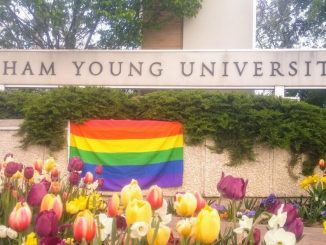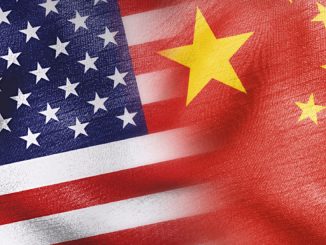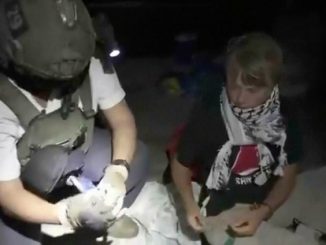
Tyler Robinson, the man accused of assassinating Turning Point USA founder Charlie Kirk on a Utah college campus a month ago today, has asked a judge for permission to wear civilian clothes in court and to appear without shackles and cuffs.
Published October 1, 2025
Justice or Optics? The Courtroom Debate in Charlie Kirk’s Assassination Case
The courtroom debate surrounding the man accused of assassinating Turning Point USA founder Charlie Kirk has taken a new turn. Tyler Robinson, the 22-year-old charged in Kirk’s fatal shooting, is asking a Utah court to let him appear in street clothes and without shackles during upcoming hearings — a move that many see as an attempt to soften his public image before trial.
Robinson’s attorneys argue that forcing him to appear in a jail jumpsuit would prejudice jurors, claiming that visual cues of custody could bias the panel against him. They cited the Bryan Kohberger case as precedent, where defense lawyers made a similar request in Idaho’s high-profile murder trial.
But critics say the motion downplays the gravity of the crime. Charlie Kirk, a nationally known conservative voice and strong advocate for free speech and traditional values, was gunned down on September 10 while speaking at a Turning Point USA event at Utah Valley University. The shooting shocked supporters across the country and was immediately condemned as a politically motivated attack on conservative expression.
⚖️ A Question of Fairness or Favor?
The defense’s filing portrays the issue as one of “fairness” — insisting that the accused deserves to look like any other citizen in court. Yet many Americans see this as another example of the justice system giving special treatment to the accused rather than focusing on accountability and truth.
Robinson, who faces a possible death penalty, has been described as “cooperative” in custody with no prior record. Still, prosecutors argue that the brutality and symbolism of the crime justify strict security measures — including restraints — to maintain courtroom safety and reflect the seriousness of his actions.
 Implications
Implications
⚖️ 1. Legal Fairness vs. Security Concerns
The request to appear in civilian clothes and without restraints raises the classic tension between a fair trial and courtroom security.
-
If granted, it supports the idea that even high-profile defendants deserve an appearance free from visual bias — reinforcing the presumption of innocence.
-
If denied, it may imply the court sees Robinson as a potential threat or views security optics as outweighing jury perception. This could also serve as grounds for appeal, should the defense argue that his appearance influenced the verdict.
🧠 2. Jury Perception & Media Influence
The defense’s argument acknowledges the unavoidable media saturation of this case.
-
Images of the accused in jail clothes can subconsciously signal guilt to jurors, even before evidence is presented.
-
Given Charlie Kirk’s public profile and the political nature of his organization (Turning Point USA), the case already carries strong ideological weight, making jury neutrality harder to maintain.
📰 3. Broader Impact on High-Profile Trials
If the court sides with the defense, it could set a symbolic precedent for future high-visibility cases.
-
Lawyers might increasingly invoke media bias as justification for relaxed courtroom protocols.
-
Conversely, prosecutors could argue that such rulings make it harder to guarantee courtroom safety and decorum, especially in politically charged cases.
⚡ 4. Political and Social Ramifications
Charlie Kirk was a polarizing public figure — admired by supporters of his conservative youth movement and criticized by his detractors.
-
The trial’s visual optics — whether Robinson appears restrained or not — may be interpreted politically, potentially sparking debate about justice, ideology, and bias in the legal system.
-
The outcome could also affect how future threats against public figures are prosecuted and visually represented in court.
🧩 5. Judicial Optics and Public Trust
Public confidence in the justice system often hinges on perceived fairness and transparency.
-
A decision allowing street clothes could signal the judiciary’s independence from public pressure and political influence.
-
On the other hand, a denial could be seen as prioritizing security optics over constitutional purity — an approach some might view as pragmatic, others as prejudicial.
 Overall Takeaway:
Overall Takeaway:
The motion to let Charlie Kirk’s accused assassin appear in street clothes is more than a legal formality — it’s a reminder of how far some courts bend to protect the image of the accused rather than the rights of the victim and the public’s need for justice.
While the defense argues about optics and juror bias, many Americans see a deeper issue: a justice system that often extends extraordinary care to criminals while victims and their families endure the slow grind of “due process.” Charlie Kirk’s supporters — and those who respected his work defending free speech and conservative values — believe the real question isn’t about clothing or shackles. It’s whether the system will deliver swift and meaningful justice for a man murdered for his beliefs.
In the end, the court’s decision will signal what kind of justice America stands for — one that appeases the sensitivities of the accused, or one that honors the memory of the slain and reaffirms that no political motive justifies violence.
SOURCES: BREITBART – Charlie Kirk’s Accused Assassin Asks to Wear Street Clothes and Ditch Shackles for Court
FOX NEWS – Accused Charlie Kirk assassin wants to ditch jail clothes for upcoming court appearances





Be the first to comment